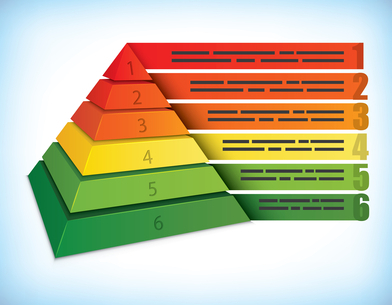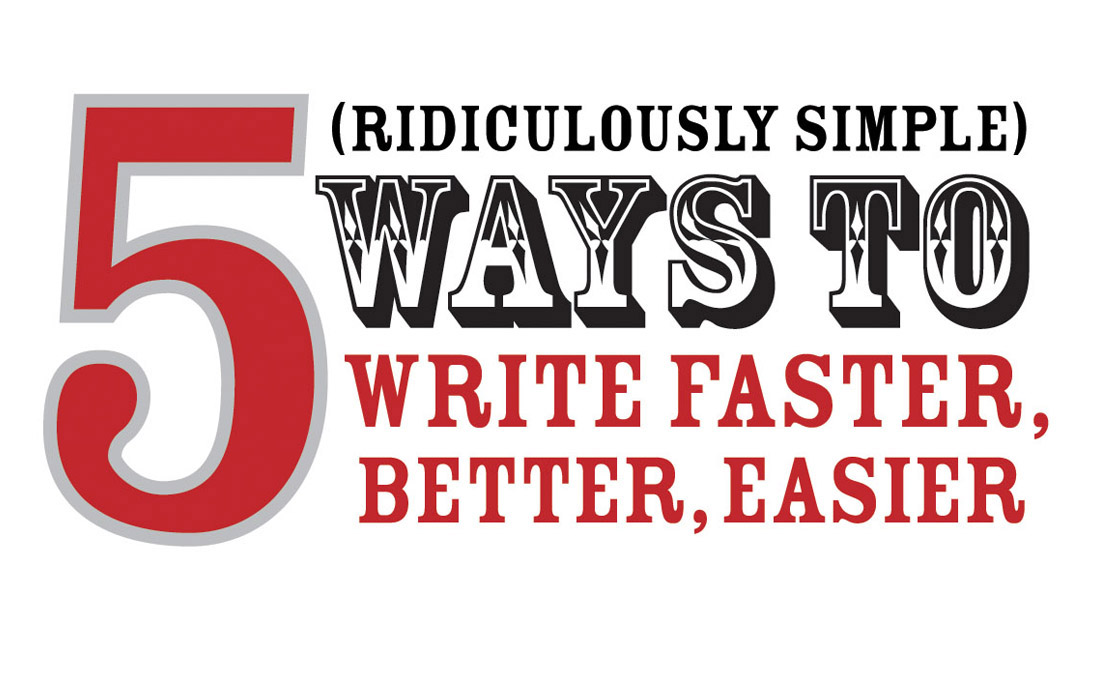Blog Post Writing: How to Create Consistent Content (in six easy steps)
 Tuesday, April 2, 2013 at 09:00AM
Tuesday, April 2, 2013 at 09:00AM Producing enough content (especially blog posts) for prospects and customers is one of the greatest marketing challenges facing organizations today.
After all, who has the time and expertise to consistently publish relevant and interesting content—quickly and effectively?

To help solve that challenge, I developed a six-step process that's highly effective, easy to use and makes writing blog posts a snap.
The six steps:
1. Create an outline
2. Audio record an expert interview
3. Transcribe the interview
4. Write and edit the blog post
5. Format the post for easy skimming
6. Proofread your blog post
Let’s look at each step more closely.
Step 1: Create an outline
Instead of writing an outline with statements or bullet points, outline your blog post by asking four or five questions. Ask “who, what, where, when, why and how” questions.
After those questions, raise an objection or a problem and then resolve it.
For example, an outline on a B2B copywriting post might look like this:
• What is business-to-business (B2B) copywriting?
• How is B2B copywriting different from business-to-consumer (B2C) copywriting?
• What elements of B2C copywriting can be used in B2B copywriting?
• Where can you learn more about B2B copywriting?
• Problem/objection/mistakes: What are three common B2B copywriting mistakes?
• Solution: Give an example or brief success story
• Summary
• Call-to-action
Step 2: Audio record an expert interview
Recording your interview is important because it will create an accurate record of the conversation. It captures not only the right content for your blog post but also the emotional words (often missing in business writing).
A side benefit of recording the interview is that you won’t be hassled with jotting down notes while you are listening.
Step 3: Transcribe the interview
Once the recording is finished, it’s time to transcribe the audio into text.
You can transcribe the interview yourself or you can outsource this job to a transcriptionist. Either way, having a transcript to work from will save you lots of writing time (and time from staring at a blank screen).
Did you know there are three hidden benefits of transcripts?
Step 4: Write/edit the blog post
Once your interview is transcribed, it’s time to write your blog post.
You can use some of the responses intact, or you may need to edit them. Feel free to move the content around and edit it until the copy flows smoothly from beginning to end.
Step 5: Format your blog post for easy skimming
When formatting your content for the web, remember to break your information into short, concise paragraphs like this one.
This creates extra white space and makes it easy for readers to skim and become more easily engaged with your copy.
To draw attention to your most useful points, you can also use:
1. Bold text
2. Bullet points
3. Numbered lists
4. Visual aids
Step 6: Proofread your blog post
The final, and often overlooked, step is to have someone besides you proofread your content.
Proofreading goes beyond correcting typos and grammar mistakes; it helps to ensure that your structure, tone and voice are on track.
If you don’t know someone who can proofread your work, there are professional proofreading services that you can find by searching the term “professional proofreading services.”
Find out more about the five benefits of having your work professionally proofread.
But what if you're not interviewing anyone? Can this process still work?
Yes it can. Write the outline and record yourself giving the answers.
Or you can answer the questions simply by writing the answers. This is what I do.
By the way, you’ll never have writer’s block using this method!
Summary
Creating consistent blog posts (and other marketing content) doesn’t have to be difficult.
Stick with this six-step process, or customize it to make it work for you.
Either way, having a simple and effective system will help remove most of the obstacles and simplify the content creation process.
Your next step
Find out from a customer or prospect which one or two problems they face and need answers to.
See if you can outline your response to the problem in a blog post. If you don’t have a blog, submit your article it to an organization for publication.
Need help kick-starting your blog?
I offer a special pricing on a 10-pack of blog posts, customized and custom-crafted for your website. Drop me a note if you're interested in learning more. Just click the "Let's Talk" tab at the top right of this page. We can talk about your goals and needs. Then we'll determine if we're a good fit.______________________________________________________________________________________
Looking for a few simple and effective ways to write faster, better and easier?
Grab my free eBook (a $37 value) when you sign up for free updates from this blog.Google+ Written by ThomasCliffordB2BCopywriter




